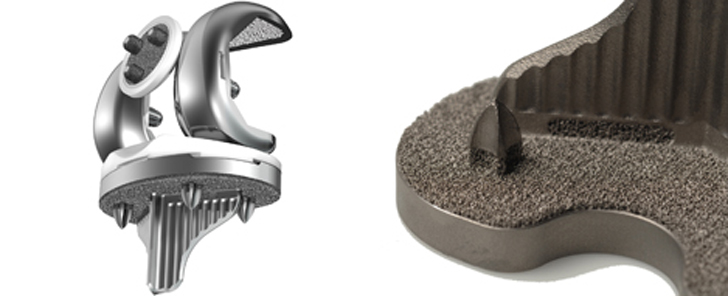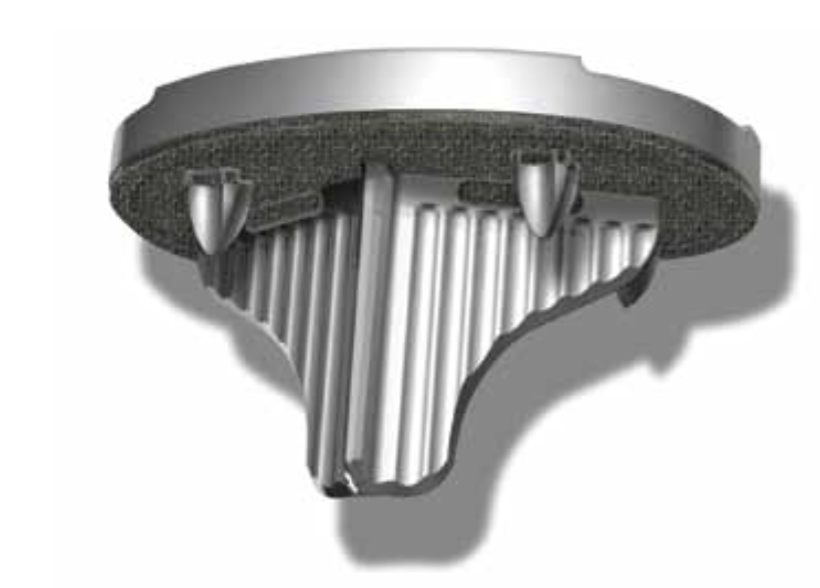3DPI readers are no stranger to 3D printed orthopedics or the adoption of 3D printing in the medical field and, over the course of 2016, we expect to see this adoption only increase. A big sign that 3D printing is becoming mainstream medical practice is news that Fortune 500 medical tech company Stryker Corporation will be building a 3D printing facility this year.
According to Medical Device and Diagnostic Industry, this news was discussed in an earnings call by the medical company on Tuesday. In the call, Stryker CEO Kevin Lobo and retiring CFO William Jellison spoke about the purpose of this facility, saying that 3D printing will be used to create new products to give Stryker a competitive edge in the market. Examples of products improved with 3D printing include a cementless knee implant, a 3D printed patella, and a tibia base plate implant, which uses geometries that can only be produced with 3D printing. They also plan to launch a 3D printed titanium interbody device for the spine. As with many 3D printed implants, Jellison says that the spine and cementless knee are porous to encourage bone growth.
Jellison, however, says that the goal isn’t to replace their products, but expand on their existing portfolio, “For the foreseeable future, at least the next three, four years or so,” he explains, “our focus is really on innovative new products and not replacing our existing products with 3D printed products. The pipeline of innovative new geometries that can’t be made without 3D printing is the area of focus. So it’s not about trying to replace our products and drive down cost. Over time ten years from now that could be the case, but in the near to midterm, it’s really focused on innovative new products.”
Lobo spoke to the difficulties of metal 3D printing, used to create these products by saying, “…3D printing metal is very different than sort of the way you think about 3D printing plastic having it on a desk in an office and cranking out 3D printed products. So metal is much more complicated.” He adds that the medical corporation has spent a great deal of time developing their metal 3D printing capabilities, saying, “We’ve been working on this for many, many years and so we have a lot of know-how on how to program the machines and optimize the machines and so there is a lot of factors that go into it to be able to create and different types of machines work that are for smaller products than larger products.”
Given the complexity of the technology, particularly in the context of a critical field like medicine, the company doesn’t envision metal 3D printing replacing its entire product process for a long time. Instead, increasing the number of 3D printed products, as well as additional focus on robotics, that Stryker offers will allow the company to offer a new product to its clients. Lobo says, “Over time, I expect robotics and 3D printing to take on a more important portion of our overall sales and there will be sustainable and sticky if we have something that the competition doesn’t have.”
What this represents to me is that, after smaller, cutting edge firms, like Materialise, have successfully demonstrated the potential of 3D printing in medicine, larger medical firms are jumping in. Similar to how HP intends to disrupt the industrial 3D printing industry with MultiJet Fusion, it wouldn’t be surprising to see medical giants attempt to swallow up medical 3D printing. When a mainstream prosthetics manufacturer begins producing low-cost, 3D printed prosthetics, competing with a non-profit like e-NABLE, this scene will be much clearer.




